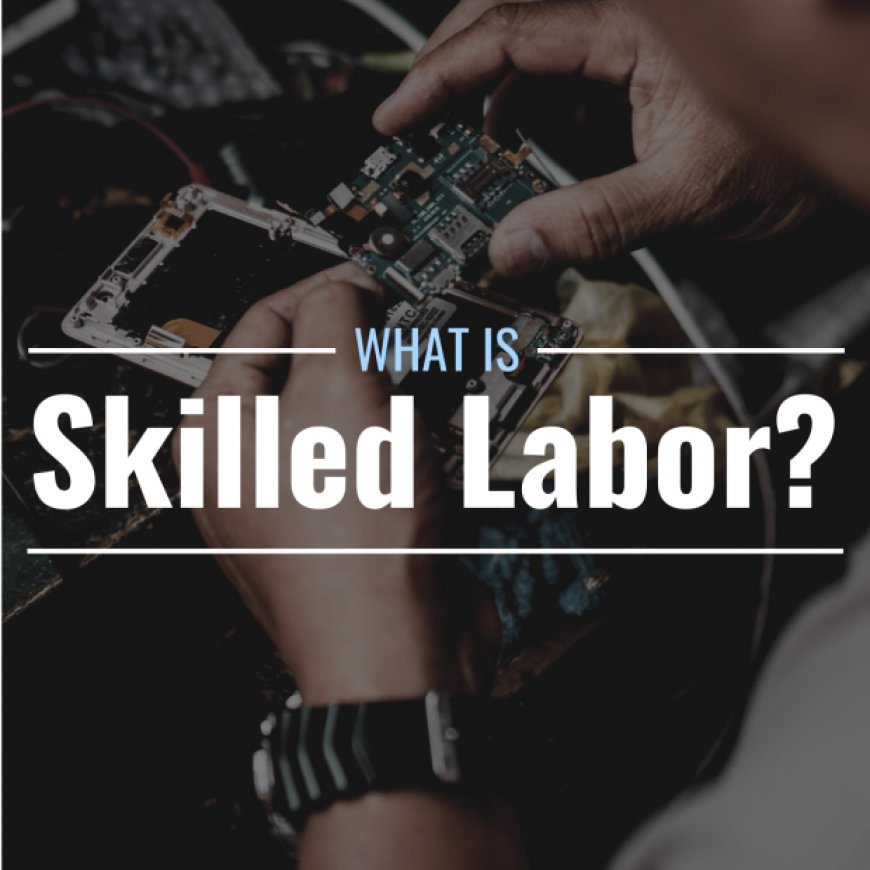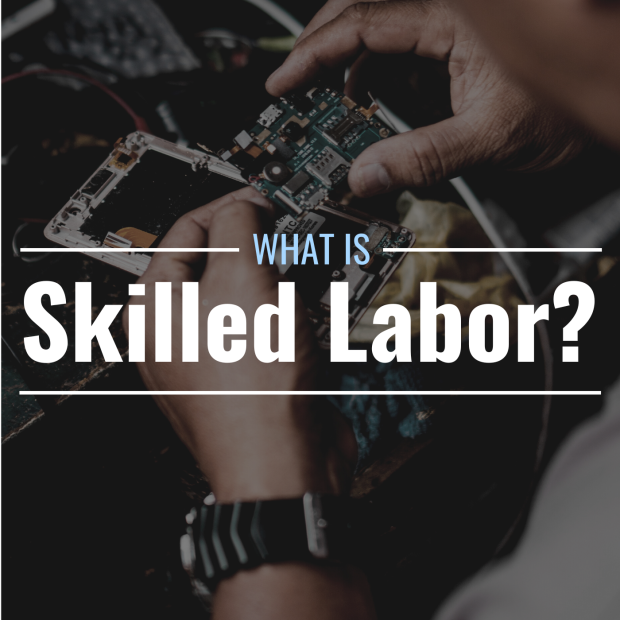What is skilled labor? Definition, examples & controversy
The workforce includes countless industries, sectors, and specialties, but it has long been divided into two general categories—skilled and unskilled labor. These terms are broad, reductive, and somewhat inaccurate, but they are still used commonly enough that it is important to understand what ...


The workforce includes countless industries, sectors, and specialties, but it has long been divided into two general categories—skilled and unskilled labor. These terms are broad, reductive, and somewhat inaccurate, but they are still used commonly enough that it is important to understand what they mean.
What does “skilled labor” mean?
Skilled labor is an umbrella term used to describe any occupation that requires specialized training, education, knowledge, or know-how beyond what could be conveyed on the job during onboarding. In other words, skilled labor jobs are those with specific educational or experiential requisites. These requisites can range from a short certificate program to an apprenticeship to an undergraduate degree to a highly specialized graduate or doctorate degree.
One example of a skilled labor occupation is a lawyer. To become a practicing lawyer, for instance, an applicant must secure an undergraduate degree, pass the LSAT, complete law school, then pass the bar exam before they could be considered for hire at a law firm.
In certain cases, the requisite training and education necessary to be considered for a skilled labor position can be acquired via on-the-job experience by moving upward into subsequently more senior positions within a single organization. For instance, an individual could work for a while as a grocery clerk before being promoted to department manager. With more experience, they could be promoted to store manager and eventually land a job as a district manager of multiple stores in a metropolitan area.
Skilled vs. unskilled labor: What’s the difference?
Unskilled labor is the counterpart to skilled labor. While jobs with educational requisites are considered skilled, any position that does not require specific education or certification prior to hiring is considered unskilled. Most unskilled labor positions are also associated with the performance of some sort of repetitive task, whether physical or mental.
Most unskilled labor positions do require specific training, but this training is typically conferred on the job post-hire. Examples of unskilled labor jobs include construction and traffic flaggers, grocery clerks, front desk workers, construction site cleaners, canvassers, custodians, and movers.
Why are the “skilled” and “unskilled” categories controversial?
The skilled and unskilled labor categories have been used commonly in discussions of employment since the late 19th and early 20th centuries, so they’ve thoroughly cemented themselves in public consciousness despite their arguable lack of specificity and utility.
While these terms describe occupations, the derivative terms, skilled and unskilled workers, are used to describe individuals, which makes things a little more personal. Those who work in so-called “unskilled labor” do not lack skills, and in many cases, unskilled labor positions are quite fast-paced, physically or mentally demanding, or otherwise difficult or grueling. In this context, “unskilled” is a misnomer, as what the term’s definition actually conveys is “unspecialized.”
Skilled labor jobs, on the other hand, are specialized in that they require a specialized background—usually in the form of a specific certification or educational track. These sorts of prerequisites are often expensive and thus inaccessible to those without financial means. For this reason, individuals from lower-income backgrounds are more likely to work in unskilled labor, and those from higher-income backgrounds are more likely to work in skilled labor.
The association between poverty and “unskilled workers” has long plagued public perception. Access to expensive educational resources does not equate to skill, capacity, or intelligence, but nevertheless, the term “unskilled worker” has developed an unfortunate connotation. Perhaps as a result of this, “unskilled” labor jobs tend to offer far lower compensation than their “skilled” counterparts, further reinforcing the generational economic disparity between those with access to more specialized education and those without.
Examples of skilled labor occupations
HVAC Technician | Surgeon | Electrician | Professor |
Social Worker | Airplane Mechanic | Regional Manager | Radiologist |
County Clerk | Chef | Pharmacist | Driving Instructor |
Public Defender | Journalist | Chemist | Personal Trainer |
Frequently asked questions (FAQ)
Below are answers to some of the most common questions readers have about skilled workers that were not addressed in the sections above.
What is semi-skilled labor?
Semi-skilled labor is an informal category that fits somewhere between skilled and unskilled labor. The Social Security Administration defines it vaguely as “work which needs some skills but does not require doing the more complex work duties.” Jobs that involve the close inspection of important processes (like the operation of heavy machinery) to ensure quality but that do not require a specialized education are often categorized as semi-skilled.
What is professional labor?
Professional labor is a subcategory of skilled labor that includes only positions that require very specific and extensive education and knowledge. Doctors, lawyers, and researchers typically fall into this category, as these occupations typically require multiple levels of intensive education and specialized degrees over many years prior to beginning work.
How much of the U.S. workforce is employed in skilled labor?
According to Statista, about 16% of the American workforce was employed in so-called “low-skill” positions as of 2020. This implies that the remaining 84% were employed in skilled labor positions or were unemployed, although much of the workforce might fall into occupations that aren’t easily categorized as skilled or unskilled, like freelance writers and graphic designers without formal education.
What is a skilled labor shortage?
A skilled labor shortage is a theoretical situation in which the demand for skilled workers (vacant skilled labor positions) outweighs the supply of skilled workers in a given city, state, or country.
According to certain pundits, the U.S. is experiencing a skilled labor shortage, specifically in the skilled trades (e.g., electrician, plumber, contractor, manufacturer, etc.), as members of the baby boomer generation retire en masse and not enough newer members of the workforce are pursuing these trades, instead opting for collegiate education or service-based work. This assertion is largely anecdotal and does not take compensation or opportunity cost into account, so it should be taken with a grain of salt.
What's Your Reaction?



























































